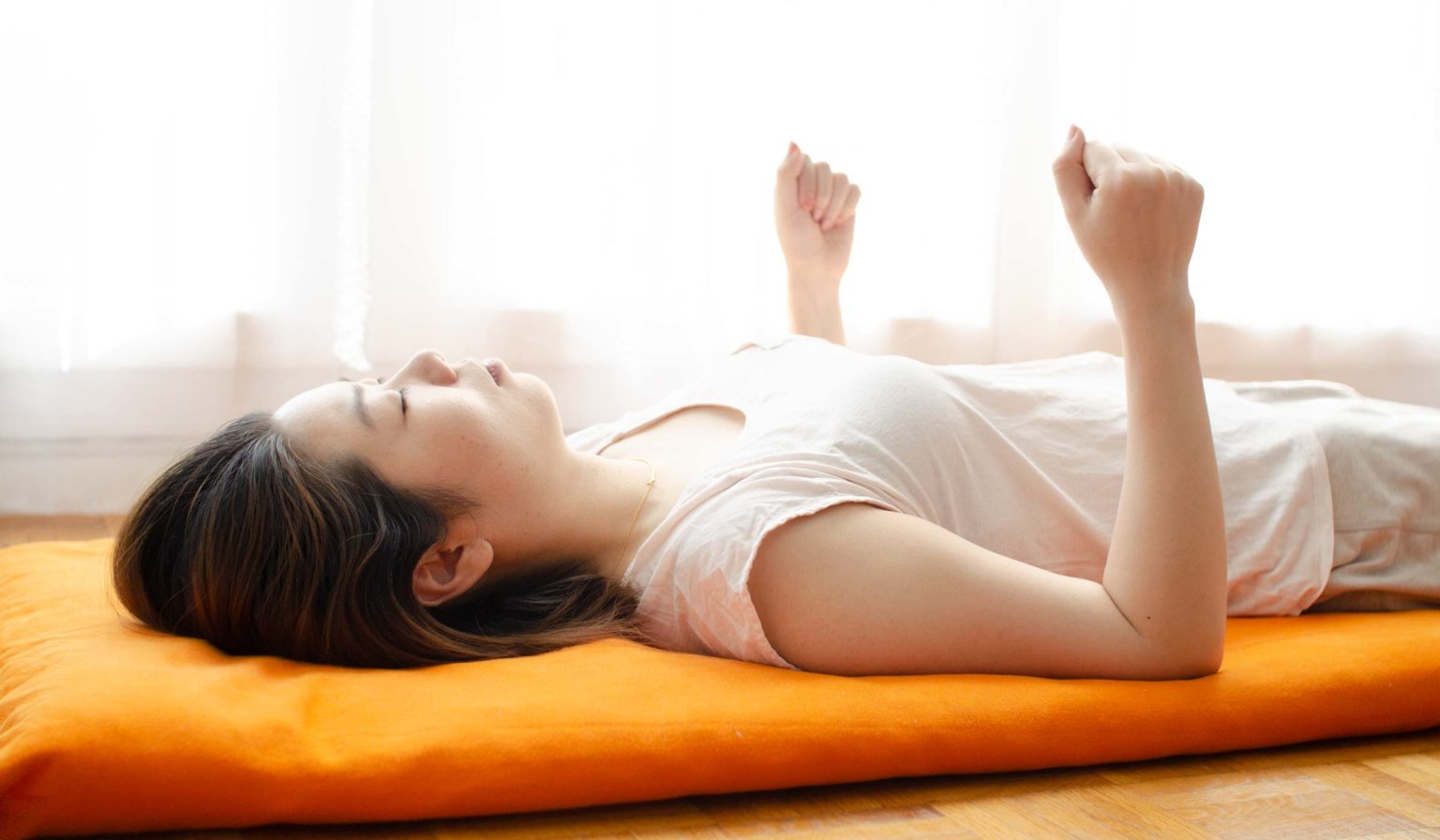Yoga nidra is a yogic relaxation method created by Swami Satyananda Saraswati. It’s a method that rapidly brings you into a state of deep relaxation. However, this state is so close to sleep that you easily can drift off and fall asleep altogether. Sleep is a common source of frustration among practitioners of yoga nidra.
Luckily, there are several measures you can take to increase your chances of conscious practice significantly. Let’s dive in and look at eight techniques that will help you to stay awake during yoga nidra.
1. Make sure you are not too comfortable
Keep in mind that you lie down to practice yoga nidra, not to have a nap. So adjust your position accordingly and don’t make yourself too cosy. Instead of falling asleep on your comfortable yoga mat, lie on a blanket. Have just enough clothes on in order not to get chilly and don’t cover yourself.
2. Make a resolution that you will stay awake during yoga nidra
Before you start yoga nidra say this silently in your mind:
“I will stay sharp and conscious. I will be able to carry out all instructions easily.“
Repeat the resolution several times.
3. Repeat the instructions of the guide
The most common way of practising yoga nidra is by following the instructions of your teacher or a recording. Hence you are relatively passive. But by mentally repeating the instructions of your instructor, you will be more active and thus find it easier to stay awake.
4. Place your forearms in a vertical position
Savasana is the standard relaxation pose. But if you need help to stay awake during yoga nidra, you can practice with your forearms in an upright position. Should you fall asleep anyway, your forearms will drop to the floor, and, you will wake up. At that point, bring your forearms back to an erect position and continue your relaxation practice.
5. Practice yoga nidra with your eyes open
Keeping your eyes open is a known trick to stay awake during meditation. Closed eyes are one of many signals for the brain to shut down and go to sleep. By not closing your eyes, it will be easier to stay conscious.
6. Keep the light on
The standard instruction for yoga nidra is to practice in a dark room. But if you need help staying awake, then practising in a bright room could be a good idea. Darkness is another sleep trigger for the nervous system. By practising in a lit place, you might get the help you need to hang on to the practice.
7. Practice yoga nidra at the end of a comprehensive yoga session
This one is an essential suggestion. Practice yoga nidra after having warmed up with other yoga methods such as asana, pranayama and concentration. The increased focus and energy from these different practices will then make your yoga nidra vibrant. In my yoga classes, both live classes and online sessions on Forceful Tranquility, I always make sure other methods precede deep relaxation.
I have had some exceptional yoga nidra practices myself by doing them at the end of very long yoga sessions.
8. Stay awake during yoga nidra by practising at a different time of the day
Your eating habits have an impact on yoga nidra. You must have digested your last meal to have good chances of not falling asleep. But there is more than meal times to take into consideration when deciding when to practice.
Due to your biological rhythm, there are moments of the day when you are more prone to drowsiness. And vice versa there are times when you are naturally more alert and awake. By paying attention to your natural rhythm, you can identify your ideal moments for yoga nidra. Experiment and try for yourself to see what works best for you.
9. Memorise yoga nidra and guide yourself
This one requires a bit of motivation, but it is efficient.
You have to learn all the instructions for the yoga nidra session you wish to do by heart. When you instruct yourself, you will find that it is much easier to stay awake. You will not be immune to sleep, though, and your yoga nidra could last longer than you expect.
10. Practice yoga nidra standing up
If all else fails, try this radical measure. Instead of lying down, practice standing up. Standing yoga nidra will make it a lot easier to remain conscious and follow all instructions. But be careful, you could fall asleep even standing up. Make sure to clear the space around you and bolster the floor should you collapse anyway.
Swami Janakananda recommended this method to course participants on long retreats who could not help falling asleep during deep relaxation.
Use a combination of several of these methods
Select the techniques that resonate most with you and try them in different combinations to be more aware during yoga nidra. But don’t be a perfectionist. Remember that if you are oscillating between sleep and conscious practice that is fine. What you want to avoid is deep sleep during extended periods.




